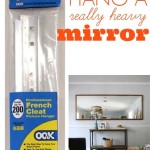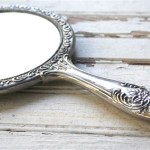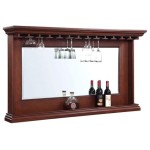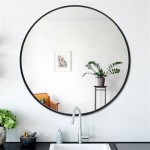The Enduring Appeal of Large Antique Overmantle Mirrors
Large antique overmantle mirrors stand as captivating centerpieces, seamlessly blending functionality with artistic expression. These mirrors, designed to be placed above a fireplace mantel, extend beyond their practical purpose of reflection. They enhance the visual appeal of a room by amplifying light, creating an illusion of spaciousness, and adding a touch of historical grandeur. The allure of these mirrors lies not only in their reflective qualities but also in their intricate craftsmanship and the stories they silently whisper from bygone eras.
The term "antique" generally refers to items at least a century old, placing many overmantle mirrors within the Georgian (1714-1830), Victorian (1837-1901), or Edwardian (1901-1910) periods. Each period boasts distinct characteristics in design, materials, and ornamentation, making the identification and appreciation of specific mirrors a rewarding pursuit for collectors and enthusiasts alike. Understanding these stylistic nuances is crucial to properly valuing and integrating an antique overmantle mirror into a contemporary setting.
The size of these mirrors is a defining characteristic. They are inherently large, designed to span the width of a fireplace mantel and extend vertically towards the ceiling. This substantial scale makes them focal points, commanding attention and establishing a sense of visual equilibrium within a room. The sheer size of the mirror contributes significantly to its impact, influencing the perceived dimensions and overall atmosphere of the space.
Understanding the Historical Context
The history of overmantle mirrors is intrinsically linked to the evolution of interior design and social customs. Initially, mirrors were luxury items, accessible only to the wealthy elite. Their presence in a home signified status and refinement. The Georgian era witnessed the rise of ornate giltwood frames, often adorned with classical motifs, reflecting the prevailing aesthetic sensibilities of the time. Carving details such as acanthus leaves, scrolls, and shells adorned these frames, showcasing the skill of the artisan and the wealth of the owner.
The Victorian period brought about greater industrialization and a corresponding shift in design preferences. While ornate styles persisted, the Victorian era also saw the emergence of more restrained designs, often incorporating darker woods like mahogany and walnut. The use of gesso, a plaster-like material, became more prevalent, allowing for the creation of intricate details at a lower cost compared to hand-carved wood. The Victorian era also saw an increased use of beveled glass, adding a subtle depth and dimension to the reflection.
The Edwardian era, with its emphasis on elegance and lightness, favored more delicate designs. Painted finishes, often in pastel shades, became popular, and the use of floral motifs and intricate fretwork increased. Edwardian overmantle mirrors often featured smaller panes of glass arranged in decorative patterns, creating a sophisticated and refined aesthetic.
Recognizing the period of origin is fundamental to appreciating the craftsmanship and historical significance of an antique overmantle mirror. Each era left its indelible mark on the design, materials, and techniques employed in the creation of these remarkable pieces.
Key Materials and Construction Techniques
The construction of an antique overmantle mirror involved a variety of materials and techniques, depending on the period and the desired aesthetic. The most common material for the frame is wood, with popular choices including pine, oak, mahogany, walnut, and fruitwoods like cherry and pear. The type of wood used often reflects the availability and cost of the material at the time of construction, as well as the prevailing stylistic trends.
Gilding, the application of thin layers of gold leaf to a surface, was a common technique used to enhance the beauty and perceived value of overmantle mirrors. Different gilding techniques, such as water gilding and oil gilding, produced distinct finishes, each with its own unique characteristics. Water gilding, known for its rich luster, involved applying gold leaf to a gesso base that had been moistened with water. Oil gilding, a more durable and less expensive method, involved applying gold leaf to a surface prepared with oil-based adhesive.
The glass itself is a crucial element of the mirror. Early glassmaking techniques often resulted in imperfections, such as bubbles and distortions, which are now considered characterful features of antique mirrors. The silvering process, which creates the reflective surface, also evolved over time, leading to variations in the quality and durability of the reflection. Examining the glass for signs of age, such as clouding or spotting, can provide valuable clues about the mirror's authenticity and history.
The joinery techniques used to construct the frame are also indicative of the craftsmanship and period of origin. Dovetail joints, mortise and tenon joints, and other traditional woodworking methods were employed to create strong and durable frames that could withstand the test of time. The presence of well-executed joinery is a hallmark of quality and a testament to the skill of the cabinetmaker.
Identifying and Assessing Quality
Authenticating an antique overmantle mirror requires a discerning eye and a thorough understanding of historical styles, materials, and construction techniques. Several key factors should be considered when assessing the quality and authenticity of a mirror. Firstly, examine the frame closely for signs of age, such as wear, patina, and evidence of past repairs. Look for the presence of original gilding or paint finishes, and assess their condition. A well-preserved original finish adds significant value to the mirror.
Next, inspect the glass for imperfections and signs of age. While some imperfections are acceptable and even desirable in antique mirrors, excessive damage or deterioration can detract from the value and usability of the piece. Check the silvering for signs of deterioration, such as clouding, spotting, or flaking. The presence of "foxing," small brown spots caused by oxidation of the silvering, is a common characteristic of antique mirrors and can add to their charm.
Consider the overall design and proportions of the mirror. Does it adhere to the stylistic conventions of the period to which it is attributed? Are the carvings and ornamentation executed with skill and precision? A well-designed and proportioned mirror will have a harmonious balance and a pleasing aesthetic appeal.
Finally, research the maker or retailer of the mirror, if possible. Some antique mirrors bear the marks or labels of renowned cabinetmakers or retailers, which can significantly enhance their value and provenance. Consulting with antique experts or appraisers can provide valuable insights into the authenticity and value of a particular mirror.
The restoration of antique overmantle mirrors requires specialized skills and knowledge. It is crucial to approach restoration with sensitivity, preserving the original character and patina of the piece while addressing any structural or cosmetic issues. Cleaning, repairing broken or damaged elements, and re-silvering the glass are common restoration tasks. However, it is important to avoid over-restoring a mirror, as this can diminish its antique value and historical significance.
Integrating a large antique overmantle mirror into a contemporary interior requires careful consideration. The mirror should complement the existing décor and architectural style of the room. Its size and scale should be appropriate for the space, and its placement should maximize its impact. A well-chosen and carefully positioned overmantle mirror can transform a room, creating a focal point that adds elegance, sophistication, and a touch of historical charm.

340 Antique Overmantle Mirrors For Ingantiques Co

Imw2265 Stunning Antique Overmantle Mirror

Large 19th Century French Overmantle Mirror Vintage Boathouse

Large Antique Parquetry Inlaid Burr Walnut Overmantle Or Wall Mirror 1900s For At Pamono

A Large Late Victorian Gilt Pine And Composition Overmantel Mirror Lassco England S Prime Resource For Architectural Antiques Salvage Curiosities

Large Antique English Giltwood Overmantle Mirror 1820s For At Pamono

A Spectacular Large Antique English 19th Century Carved Wood Gesso Arched Top Gilt Reeded Framed Overmantle Mirror 1034705 Ingantiques Co

Antique Overmantel Mirror Overmantle Mantel Piece Fireplace Large Wall Convex Pair Of And

Vintage Large Mahogany Over Mantle Mirror Wells Reclamation

A Gorgeous Large 19th Century Giltwood Overmantle Mirror In Antique Mirrors








